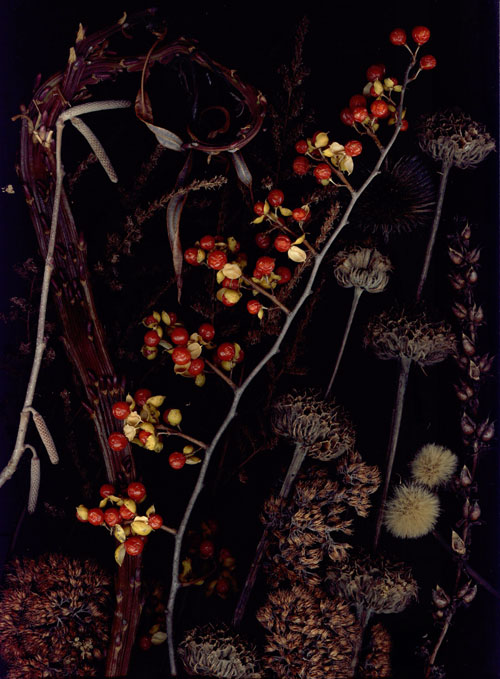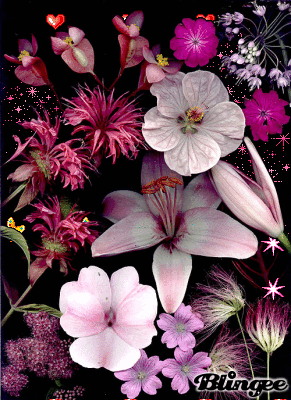Many thanks for Carol at May Dreams Garden for organizing the bloom day.
Still not happy with winter scans. But may still do a calendar for 2010.

Larger image | supersized
Scanner art by Craig Cramer, gardening & more
Garden art, PhotoShopped images, etc.
Many thanks for Carol at May Dreams Garden for organizing the bloom day.
Still not happy with winter scans. But may still do a calendar for 2010.

Larger image | supersized
Steve Silk’s post on plume poppies at Gardening Gone Wild made me realize how much I take this great plant for granted. Evidence of that: I had to search high and low on my hard drive to find even one picture, the PhotoShop filtered image above of an allium with the plume poppy foliage in the background.
Echoing Steve, I love the leaves with their cut edges. My main patch is across the living room from my desk, where that foliage is framed in a window and helps block the busy road out front.
On the north side of the house, it’s maybe not as aggressive as it might be in a spot with better sun and soil. I pluck a few stray runners early in the season to keep it in bounds. It’s not the rampant hog some told me it would be when I first planted it. (I like a plant that can hold its own.) But the plumes do rise up about 7 feet.
I’ve got a real hell strip about 2 feet wide between the driveway and house with the worst soil on the place where it tops off at about 4 feet. It has a totally different character there.
If anyone wants a start, stop by.
Hat tip to Matt Mattus for his post about rice field art near the village of Inakadate. Designs are ‘painted’ into fields using rice varieties with different leaf colors. (Here’s what the plants look like up close.)
I was pleased to see one inspired by one of my favorite woodblock prints of Mt. Fuji by Katsushika Hokusai.
[Full disclosure: I work in Cornelly University’s Department of Horticulture.]
If one of your new year’s resolutions is to become more creative and perhaps unleash that artist hidden within, consider:
Introduction to Botanical Illustration
Course starts Jan. 19.
If you’ve ever wanted to become proficient at illustrating what you see in your garden, this 6-week online course will teach you the basics of rendering plants in pencil and ink.
The instructor, my friend and co-worker Marcia Eames Sheavly, is an accomplished artist who also teaches our popular Art of Horticulture course, recently featured by Julie over at The Human Flower Project.
More info about the course. | View the full syllabus.
There’s also an online organic gardening course that starts tomorrow, Jan. 5. You can still register if you hurry.
You might want to start with Part 1.
July
July started with a rare vacation away from home, to my brother’s lake house to celebrate my Dad’s 80th. On the boat with my sister Cheryl and wife Elly …

With Cheryl and Alex after a good morning of striper fishing.
Back home, it’s midsummer and there are lots of great serendipitous plant combos to enjoy, in the wet garden …
… and front garden.
Enough plant material to do bloom day scans in four different color schemes.
Out in the garden, lilies …
The rusty favorite, Digitalis ferruginea
Exploring backlighting.
Lots of gaudy flowers to shoot. Hibsicus at Cornell Plantations …
Filipendula.
Lily
Plus my 15 minutes of fame in USA Weekend.
August
Jade rolling under a double rainbow ’bout sums up my feelings about August.
They say things start slowing down in the garden in August. Can’t say I’ve noticed that. There’s lots growing around the patio, but still not much time to sit.
Still plenty of flowers to shoot, including Daylilies, purple …
… and yellow …
… buttonbush …
…globe thistle …
… water lily …
One of the bloom day scans for the month.
I also defended heucheras.
August has nice sunsets, too.
September
OK. The pace does start to slow in September. But it’s still one of the best times of year in these parts, if not the most floriferous.
The colors are more subtle, like this anemone.
My favorite bloom day scan featured grasses, not blooms.
I featured my four (that’s a stretch) water gardens in the month’s Garden Bloggers Design Workshop.
And on a rainy day, I discovered blingee.

October
October is the month of frost and fall color. But that doesn’t mean there aren’t still some flowers around, like my fall favorites, anemones.
Abutilon pictum ‘Thompsonii’
Grasses carry the weight in October.
Fall colors start coming with Polygonatum odoratum ‘Variegatum’
First frosts provide great photo opps …
Asian pear in the veggie garden.
Pitcher plant
Backlit grasses usher in brown season.

November
Fall color is where you find it, like this pitcher plant …
… and this bittersweet and borrowed scenery.
When there’s less to see looking down, you appreciate more the view looking up.
January came in November [impressions | the real thing]
I visited the Winter Garden at Cornell Plantations as the light was waning.
December
Check out the student projects from Cornell’s Art of Horticulture class.
Glowing greenhouses make leaving work after dark a little less depressing during these SAD-inducing months.
And I’ve now got a passable scan for December for my planned 2010 garden scan calendar.
Thanks for visiting and commenting. Best wishes for the New Year.